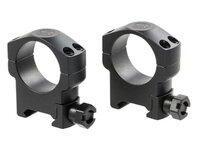passinggas33
WKR
I’m just curious if there would be a way to determine a ring for pass/fail evaluation consistently? We’ve seen drop tests on scopes, freeze/snow tests on triggers, but I’ve never seen this part tested. Wouldn’t it be important to see if the thing that holds the scope is worth anything? I truly don’t know and am genuinely curious.
Some people love talleys. Some hate them. Some like Nightforce rings. Some hate them. I know not all rings are created equal, so just curious if there was a way to test to see if certain ones could actually handle the stresses they are put under. In some situations, are scopes “failing to hold zero” not as much due to the scope, and more due to mounting (whole other thread) and rings?
Recovering from back surgery so I’ve got an idle mind right now worrying about things that might not be worthwhile.
Some people love talleys. Some hate them. Some like Nightforce rings. Some hate them. I know not all rings are created equal, so just curious if there was a way to test to see if certain ones could actually handle the stresses they are put under. In some situations, are scopes “failing to hold zero” not as much due to the scope, and more due to mounting (whole other thread) and rings?
Recovering from back surgery so I’ve got an idle mind right now worrying about things that might not be worthwhile.


